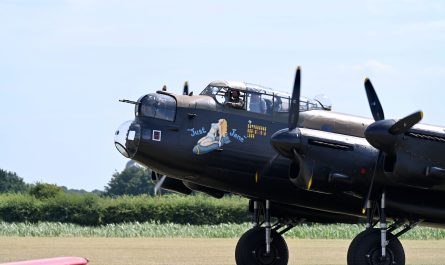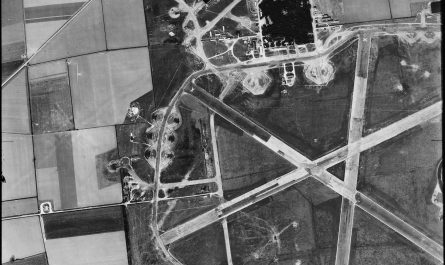A chilling reminder, 1080 airmen gave their lives flying from Wickenby in WW2.
Today, I visited what was RAF Wickenby (North of Lincoln). I didn’t do much investigation, but will plan to do more when I visit again. The real purpose of the visit was to have a coffee in the old watch tower and have a mosey round the museum. Unfortunately, the museum was closed. For full details visit Wickenby website.
Wickenby Aerodrome has been an active airfield since the 1960s, and was used as a satellite station for operations by Lancaster Squadrons 12 and 626 during World War Two. RAF Wickenby was a purpose built bomber base constructed in late 1942 and early 1943. It had two T2 type hangars and one B1 type. The B1 and one of the T2 hangars can still be seen on the airfield site.
RAF Wickenby was built as a Class A bomber airfield, which was constructed by McAlpine in late 1941. The site took in land from the parishes of Snelland and Hilton necessitating the closure of the road between these two villages. Three runways were constructed and 36 pan type hardstandings were provided with one being used for a T2 type hangar adjacent to the technical site on the north-east sideband, a B1 at the opposite side of the airfield near the threshold of runway 09. Domestic sites, mostly Nissen huts, were dispersed on the eastern side of the B1399. Available accommodation was 1,788 male and 287 females. Additional construction on the airfield was carried out by Laings in early 1943.
By September 1942, RAF Wickenby was ready to accept its first aircraft – Wellington bombers of 12 Squadron, based at nearby RAF Binbrook. The rapidly growing aerodrome soon became the first station in One Group, Bomber Command, to be equipped with the new Lancaster.
On 7th November 1942, 626 Squadron was formed out of 12 Squadron’s ‘C’ Flight and both squadrons continued to operate until late 1945. Apart from a brief spell with the Mosquitos of 109 Squadron, November 1945 saw the last service flying from RAF Wickenby.
After flying ended, the runways were used for explosive storage and demolition, until the early 1950s.
The airfield was deactivated in 1956 and the land sold to local farmer, Mr Cottingham.
A group of local enthusiasts, led by the late John Frecklington and Bob Merewood, persuaded him to allow them to start Wickenby Flying School and Club with three light aircraft. Much hard work, over six years, cleared the runway and restored, to some extent, the Watch Tower.
The airfield was purchased and the new venture obtained a full Civil Aviation Authority airfield licence. Over the next thirty three years this became Wickenby Aviation Ltd an aircraft maintenance company and aircraft charter operator, contracted to many large industrial companies. They trained up to 50 Air Cadets each year and hosted many Rothmans and Marlborough aerobatic teams and the National Aerobatic Championships were often held at Wickenby.
In 1997, John and Bob sold most of the airfield and returned to their first love – classic aircraft. John passed away in August 2017 but Bob still retains a hangar and several tailwheel aircraft.
Visit: Wickenby Airfield website for much more information.
Images here: http://www.ukairfields.org.uk/wickenby.html
RAF Wickenby Museum: https://www.wickenbymuseum.co.uk
Lincoln Flight School: https://www.lincolnflight.co.uk
EGNW – Airfield Details: https://skyvector.com/airport/EGNW/Wickenby-Airport
Location: 53°19’01″N 000°20’56″W
Runway: 03/21 – 1,400 yards – concrete (CLOSED)
Runway: 09/27 – 2000 yards- concrete (CLOSED)
Runway: 16/34 – 1,400 yards – concrete (CLOSED)





































